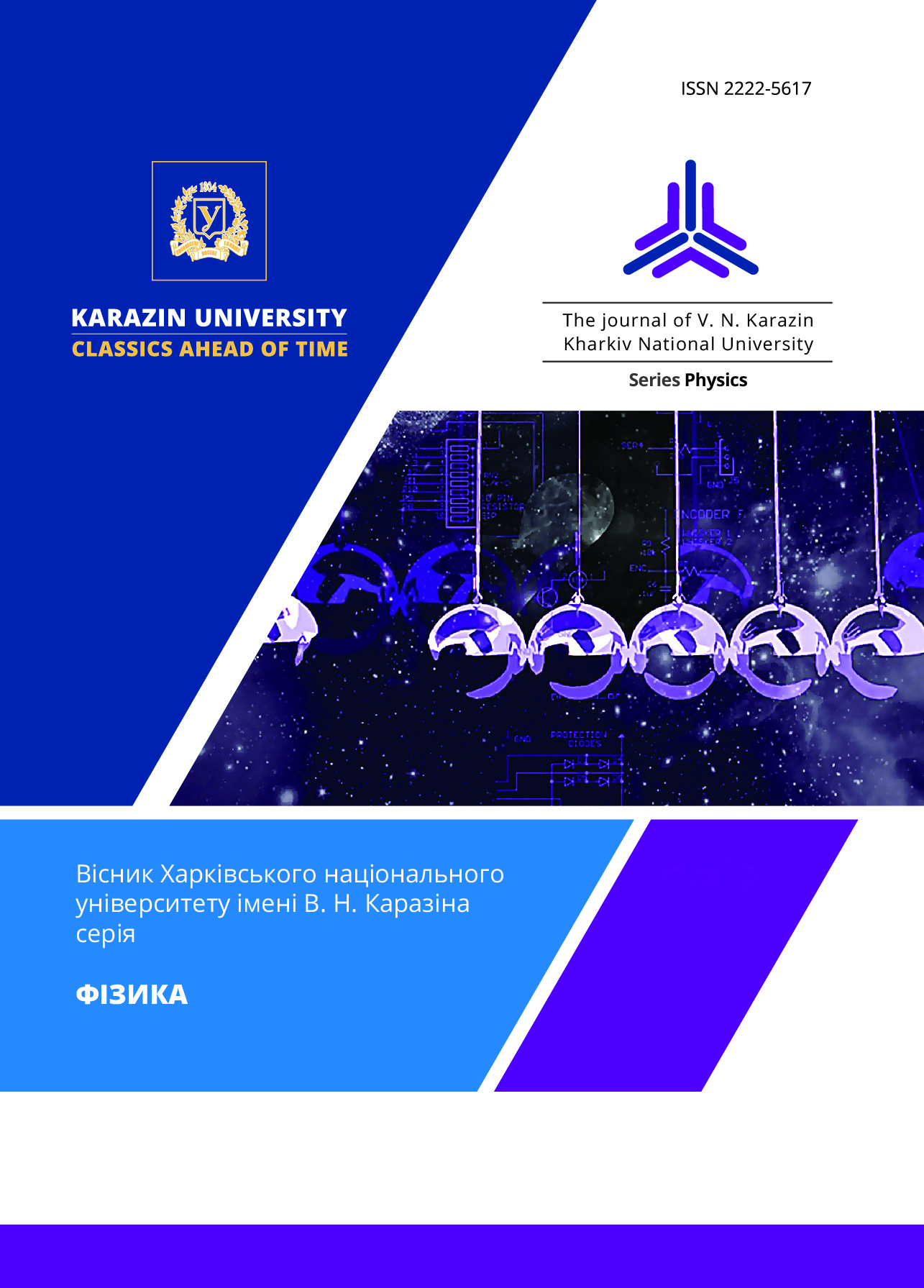The influence of the main alloying elements on the formation of the initial grain structure, on phase transformations and on structural changes that occur during superplastic deformation of alloys Al - 4.1 wt.% Mg - 0.5 wt.% Zr, 1420T, 1421, 1423
Abstract
The article presents the results of research aimed at revealing the influence of the main alloying elements on the formation of the initial grain structure, on phase transformations and on structural changes that occur during superplastic deformation of several aluminum alloys. It was possible to form a homogeneous ultrafine-grained structure in samples of alloys Al - 4.1 wt.% Mg - 0.5 wt.% Zr and 1423 due to dynamic recrystallization during their superplastic deformation. It is revealed that the initial microstructure of the 1420T alloy samples is bimodal. The average grain size is approximately 5 μm, in some areas of the working part of the samples there are large elongated grains, the average size of which is approximately equal to 25 μm. The initial structure of alloy 1421 samples is fine-grained, and the initial structure of alloy 1423 samples is multi-grained and coarse-grained. Metallographic studies showed that the grain structure of samples of alloys 1420T, 1421 and 1423 increases slightly during superplastic deformation at high homologous temperatures. Cavitation accumulates in the samples and structural changes occur, which are probably associated with local melting at grain boundaries and at interphase boundaries. It was established that the presence of zirconium and scandium additions in the composition of the samples ensures the formation of an ultrafine-grained structure in them and counteracts the grain growth during superplastic flow. Magnesium and lithium, which are included in the samples of the studied alloys 1420T, 1421 and 1423, form several intermetallic phases with aluminum. These phases are part of mixtures of crystals of peritectic origin, which are localized in the form of layers between some grains. The occurrence of peritectic reactions at high homologous temperatures can be one of the reasons for the partial melting of samples of alloys 1420T, 1421, and 1423 during their superplastic deformation. Partial melting of samples of alloys 1420T, 1421 and 1423 can probably be carried out due to the presence of segregations of magnesium and lithium at the grain boundaries, which lower the melting temperature of the aluminum-based solid solution. Partial melting of samples of alloys 1420T, 1421, and 1423 during their superplastic deformation, which is performed at high homologous temperatures, leads to the formation of cells of a metastable liquid-solid phase at the grain boundaries, the viscous flow of which leads to the formation of fibrous structures due to the development of grain boundary sliding.
Downloads
References
2. О.А. Кайбышев Сверхпластичность промышленных сплавов, Металлургия, М. (1984). 264с.
3. Сверхпластическая формовка конструкционных сплавов
/ Под ред. Н. Пейтона, К. Гамильтона: Пер. с анг., Металлургия, М. (1985). 218с.
4. K.A. Padmanabhan, S. Balasivanandha Prabu,
R.R. Mulyukov, Ayrat Nazarov, R.M. Imayev, S. Ghosh Chowdhury Superplasticity: Common Basis for a Near- Ubiquitous Phenomenon, Springer, Verlag, Berlin, Heidelberg. (2018). 526p. https://doi.org/10.1007/978-3- 642-31957-0
5. Xiao-guo Wang, Qiu-shu Li, Rui-rui Wu, Xiao-yuan Zhang, Liyun Ma, Advances in Materials Science and Engineering. V., Article ID 7606140. 1-17 (2018). https:// doi.org/10.1155/2018/7606140
6. В.П. Пойда, А.В. Пойда Вісник ХНУ імені В.Н. Каразіна, серія «Фізика». В.36, 14 (2022). https://doi. org/10.26565/2222-5617-2022-36-02
7. И.Н. Фридляндер, К.В. Чуистов, А.Л. Березина, Н.И. Колобнев. Алюминий-литиевые сплавы. Структура и свойства, Наукова думка, Киев. (1992). 192с.
8. Алюминиевые сплавы (состав, свойства, технология, применение). Справочник / В.М. Белецкий, Г.А. Кривов. Под общей редакцией И.Н. Фридляндера, КОМИНТЕХ, К. (2005). 365с.
9. В.П. Пойда, Вісник Харківського державного університету. Серія “Фізика”, В.1, №417, 90 (1998).
10. В.П. Пойда, В.В. Брюховецкий, Р.И. Кузнецова, Н.К. Ценев, Н.Н. Жуков Вісник Харківського державного університету. Серія “Фізика”, В.5, №516, 99 (2001).
11. В.П. Пойда, В.В. Брюховецкий, Р.И. Кузнецова, А.В. Пойда, В.Ф. Клепиков, Металлофизика и новейшие технологии, Т.25, № 1, 117 (2003).
12. В.П. Пойда, А.В. Пойда, В.В. Брюховецький, Р.І. Кузнєцова, О.П. Кришталь, О.Л. Самсоник, Д.Є Педун, Кафарані Алі Махмуд, // Вісник Харківського державного університету. Серія “Фізика”, В.13, №914, 86 (2010).
13. В.П. Пойда, Д.Е. Милая, А.В. Пойда, В.В. Брюховецкий, Р.В. Сухов, Вопросы атомной науки и техники. Серия
«Физика радиационных повреждений и радиационное материаловедение», №4 (92) 139 (2014).
14. Д.Є. Мила, В.П. Пойда, В.В. Брюховецький, А.В. Пойда, Металофізика та новітні технології, Т.42, №.4, 511 (2020). https://doi.org/10.15407/mfint.42.04.0511
15. С.А. Салтыков. Стереометрическая металлография, Металлургия, М. (1976), 272с.
16. М.Х. Рабинович, Н.К. Ценев, Р.З. Валиев, Изв. АН СССР. Металлы, №6, 143 (1984).
17. Р.З. Валиев, О.А. Кайбышев, Г.Ф. Корзникова, Н.К. Ценев Физика металлов и металловедение, Т.62, В.1, 180 (1986).
18. М.Е. Дриц, Э.С. Кандер, В.И. Кузьмина, Изв. АН СССР. Металлы, №5, 170 (1969).
19. Д.Е. Педун, В.П. Пойда, В.В. Брюховецкий, А.В. Пойда, Р.В. Сухов, А.П. Крышталь, Вісник Харківського державного університету. Серія “Фізика”, В.18,
№1075, 55 (2013).
20. В.П. Пойда, Д.Є. Мила, А.В. Пойда, В.В. Брюховецкий, С.І. Петрушенко Вісник Харківського державного університету. Серія “Фізика”, №35, 7 (2021).
21. M.G. Zelin, S. Guillard, Materials Science and Technology, V.15., 309 (1999). https://doi. org/10.1179/026708399101505734
22. C.L. Chen, M.J.Tan, Materials Science and Engineering, A298, 235 (2001). https://doi.org/10.1016/S0928- 4931(00)00193-4
23. M. Mabuchi, H.G. Jeong, K. Hiraga, K. Higashi, Interface Sci., V.4, №3-4, 357 (1996). https://doi.org/10.1007/ BF00240254
24. M. Wang, H.Z. Guo, Y.J. Liu, Materials Science Forum., V.551-552, 645 (2007). https://doi.org/10.4028/www. scientific.net/MSF.551-552.645
25. W.D. Cao, X.P. Lu, H. Conrad, Acta Mater., V.44, №2, 697. (1996). https://doi.org/10.1016/1359-6454(95)00176-X
26. Jung-Kuei Chang, Eric M. Taleff, Paul E. Krajewskib and James R. Ciulika Scripta Materialia, V.60, Issue 660, 459 (2009). https://doi.org/10.1016/j.scriptamat.2008.11.031








3.gif)
